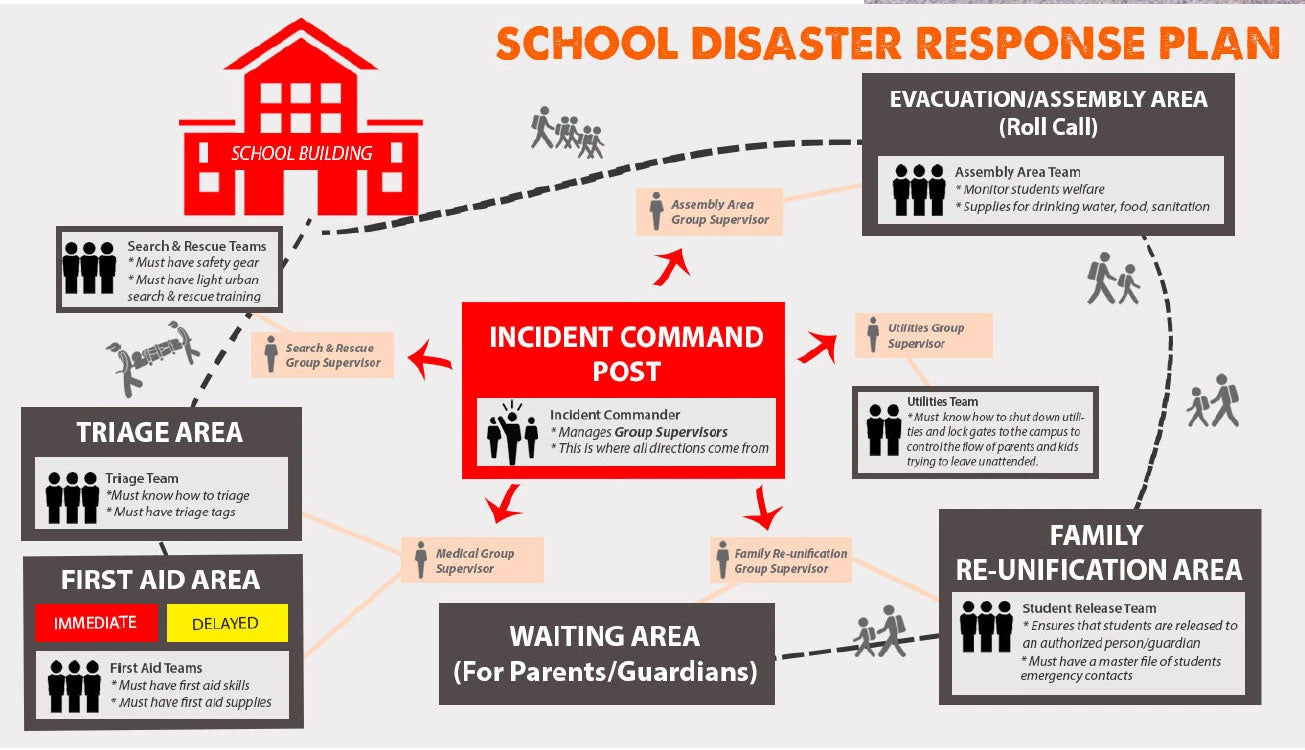In my 25-year tenure as a Fire Department Captain, I've learned that when it comes to emergencies, every second is precious. We have to make each count. That's why it's crucial to have effective and efficient procedures in place for school evacuation and search & rescue efforts. A well-prepared school can save countless lives in the face of disaster.

Evacuation: The Quick and the Careful
When disaster strikes, getting students out of the building swiftly and safely is of the utmost importance. However, the current approach has a significant flaw. It encourages teachers to evacuate non-injured students quickly, often leaving the injured behind for later search & rescue. My years of experience in the field tell me that this strategy is not the most efficient or the safest.
In reality, the students who are most likely to be seriously injured are those who cannot stand up and exit the building. Teachers should therefore quickly check these students for life-threatening conditions such as airway obstructions, severe bleeding, and shock. Meanwhile, students who are able to exit on their own are not likely to be suffering from these critical conditions and can be evacuated to a safe location.
By embracing this method, we can effectively attend to the needs of the most vulnerable while ensuring the safe evacuation of all. This approach not only saves time but also provides immediate care to those in dire need, making every second count.

Streamlining the Roll Call Process
The current roll call method, which dates back to the 1990s, can take up to 20 minutes to complete - an eternity in an emergency situation. My experience has shown me that time is of the essence, and we need to rethink this process.
A better alternative is to have a designated staff member, like the school secretary, positioned at the evacuation area to connect with teachers who had to leave students behind. Once the necessary immediate care has been provided, teachers should promptly report to the secretary the number of students left behind. This information can then be relayed to the Incident Commander to ensure immediate rescue action for the identified students.
Refining Search & Rescue Operations
Traditional sweeping procedures can be inefficient in a school setting. Why inspect every room and building when the locations of remaining students are known to the teachers? The teachers can mark their classrooms during evacuation, indicating if students have been left behind. With this knowledge, Search & Rescue teams can directly proceed to the marked classrooms, saving precious time.
By streamlining these processes, we can ensure a safer and more effective response to emergencies in schools. This not only improves our preparedness but also significantly reduces the time it takes to respond to an emergency.
Preparedness is Paramount
I encourage all schools to utilize our Free School Disaster Calculator. This tool offers personalized recommendations for enhancing your school's safety procedures based on an assessment of your school's specific disaster risks.
Further, I urge you to check out the comprehensive School Earthquake Preparedness Guide: Activity Checklist and Videos. This resource-packed guide provides a wealth of practical knowledge, distilled from years of experience and designed to assist schools in preparing for seismic events.
Remember, in a disaster situation, every second counts. Let's work together to ensure we are doing everything we can to protect our students and staff, making every second of our response count.

